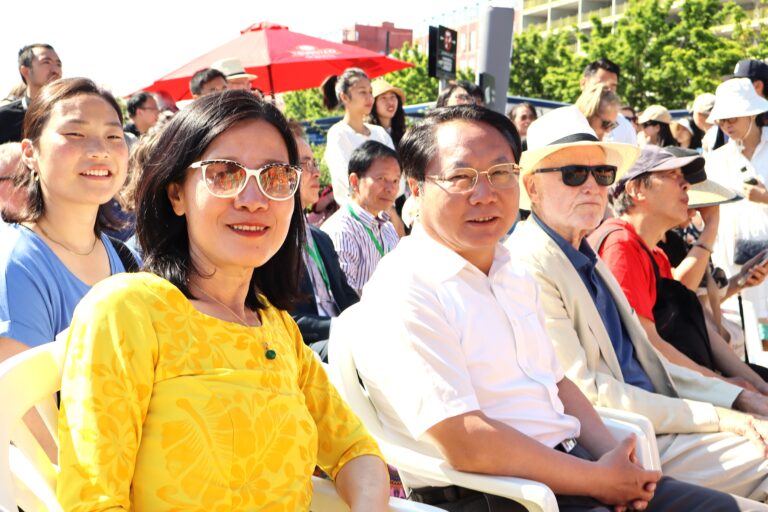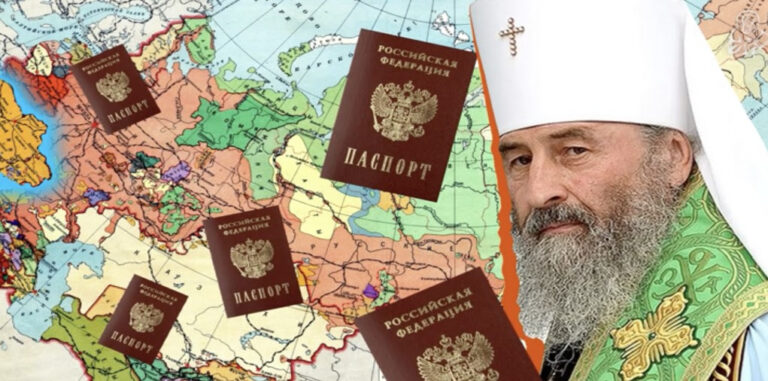By Kamila Bogdanova
Can artificial intelligence predict and prevent diseases before clinical symptoms appear? Will smart factories balance automation with safe human–robot collaboration? How close are we to AI-managed air travel and single-pilot cockpits? These questions guided the fifth session of the global course “Understanding AI and Robotics: Their Multi-Dimensional and Multi-Spatial Implications for the Public and Private Sector”, held on 19 June 2025 under the title “Smart Production in the Connected World.”
Spanning the fields of medical technology, industrial manufacturing, product engineering, and aviation, the 5th lecture brought together three distinguished experts: Dipl.-Ing. David Ljuhar, founder of BRAINCON Technologies, Captain Rehan van Tonder, CEO of Shift Aviation Solutions and Boeing 777 pilot, and Dr. Sebastian Schlund, Head of the Institute of Production Engineering at TU Wien.
Framed by topics such as Industry 4.0, AI-powered logistics, healthcare prediction models, and safe aviation, the session offered participants both practical insights and critical reflections on what smart production truly demands in an increasingly connected world.
AI for Healthcare and Infection Control: Davul Ljuhar’s Perspective
Dipl. Ing. Davul Ljuhar delivered a lecture on the applications of AI in healthcare diagnostics and infection control. Drawing from decades of professional experience in high-tech industries and medical engineering, Ljuhar detailed two main areas of his expertise and work: AI in predictive diagnostics of bone-related diseases, and AI in the control and prevention of hospital-acquired infections.
Ljuhar began his presentation by reflecting on his initial encounter with AI, that took place in 1987, during his research on the use of expert systems in mechanical design. He later founded BRAINCON Technologies and redirected his focus to the assessment of bone diseases, specifically osteoporosis.
In collaboration with French researchers, Ljuhar’s team shifted from bone density to bone quality as the primary indicator of bone health. They used fractal dimension analysis to assess bone structure, establishing a methodology to evaluate the quality of bone tissue. This required large datasets and clearly defined ground truth standards.
Between 2012 and 2018, his team analysed a 10-year retrospective dataset from San Francisco. It comprised 7.4 terabytes of data from 7,000 patients. From this data, they isolated 2,000 baseline patients with no visible symptoms. Of these, 1,000 later developed osteoarthritis. Ljuhar’s analysis confirmed that predispositions to disease were visible in baseline data, proving that AI could detect early structural anomalies well before clinical symptoms appeared.
Building on this foundation, his team expanded AI applications to diagnose rheumatoid arthritis and osteoporosis. Ljuhar noted parallels in current mammography technology, where AI systems can detect precancerous lesions up to three years in advance.
AI in Infection Prediction and Control
From 2016 onward, Ljuhar shifted focus to nosocomial (hospital-acquired) infections. He emphasized the global urgency of this issue, citing an estimated 36 million annual deaths due to such infections, with a projected increase to 170 million by 2050. Ljuhar identified a need for systems that combine software and hardware to support hospitals in disinfection and outbreak prevention.
A significant challenge lay in the diversity of available data, which often lacked compatibility. Ljuhar illustrated this with an analogy: translating technical data from German to Chinese and back again resulted in inconsistent information. His team worked to harmonize and structure this data by identifying correlated data clusters. They defined four initial data groups to analyse environmental factors such as humidity, temperature, and chemical concentration (e.g., hydrogen peroxide) in hospital settings.
Using convolutional neural networks (CNNs), his team developed algorithms capable of predicting effective germ inactivation strategies. Ljuhar highlighted the potential of reinforcement learning and cognitive systems in future infection control, anticipating AI-supported systems that could adapt and improve based on environmental data and past performance.
He referenced a current case in Kenya, where hospital infection rates contribute to 32% infant mortality among newborns. According to Ljuhar, such AI systems could significantly lower infection-related deaths and costs, which are expected to reach over $200 billion by 2050. In Austria alone, 140,000 cases of nosocomial infection are reported annually.
Ljuhar concluded by stating that his company’s pilot systems would be tested in hospitals starting later this year. He stressed that AI could provide meaningful support in global healthcare management and serve as predictive tools for both chronic diseases and public health crises.
AI in the Aviation Sector: Rehan Van Tonder’s Perspective
Captain Rehan Van Tonder, CEO of Shift Aviation Solutions Group, a former Boeing 777 captain and instructor, introduced the foundational structure required for operating an airline, emphasizing five essential components: physical hardware, human software, an operational base, financial support, and legal authorization. He underscored that the current aviation model faces persistent inefficiencies. These include long wait times for check-in, boarding, and immigration processes. According to Van Tonder, AI can directly address these inefficiencies through automation and predictive planning.
Van Tonder highlighted how third-party services are set to revolutionize passenger logistics. AI-powered drones could transport baggage directly from a passenger’s home to the aircraft. Biometric verification systems, already in use for passport control, are likely to eliminate the need for physical boarding passes. Wearable devices like smartwatches will soon enable biometric identification from check-in to boarding. These advancements will streamline the entire passenger journey.
AI in Flight Operations and Safety
Rehan Van Tonder stressed the vast volume of operational data transferred between aircraft and systems such as flight planning, maintenance, and checklist management. He emphasized that AI could translate this data into actionable insights, enhancing cognitive support for human operators. AI will reduce pilot errors by filtering and prioritizing information in high-pressure scenarios.
He presented a model for future flight decks, which may involve single-pilot operations. AI systems would take on procedural and emergency functions, leaving the pilot to supervise and intervene in exceptional cases. In the long term, pilotless cockpits might become feasible, although safety protocols and insurance frameworks remain barriers.
Economic Implications and Human Roles
Responding to a question about operational costs, Van Tonder explained that pilots contribute roughly 10% to an airline’s overall expenditure, with hardware, software, and fuel costs each constituting about a third. Automation could reduce the number of pilots needed on long-haul flights, generating cost savings without compromising safety. Cabin crew responsibilities will also evolve, with AI-enabled robots managing non-critical tasks like food and beverage service, while humans focus on safety and security.
Van Tonder anticipated future developments in AI-human interaction. Wearable cognitive augmentation devices could monitor pilot stress levels in real time. Ethical questions arise: who owns the data collected from a human’s brain activity? Will cognitive ability disparities lead to inequality in interfacing with advanced systems?
He warned of potential consequences if AI systems malfunction or behave unpredictably. AI oversight mechanisms must ensure fallback options, such as remote piloting, remain viable.
AI Solutions for Airport Efficiency
Van Tonder presented innovations developed by his company, including AI software that sequences aircraft arrivals to minimize holding patterns and reduce delays. This approach could eliminate the need for costly airport expansions. He cited the example of Montenegro, where his company’s software projected annual savings of over 70 million euros.
These solutions aim to optimize existing infrastructure, reduce CO2 emissions, and increase the efficiency of resource use across the aviation ecosystem.
Health Risks and Radiation Exposure
Van Tonder also addressed concerns about radiation exposure in aviation. He cited peer-reviewed research showing varied outcomes but confirmed that exposure does exist, especially for flight crews. Airlines monitor solar activity and adjust flight paths to mitigate risk. The implementation of AI may allow real-time radiation monitoring and further reduce health risks.
Van Tonder concluded by advocating for AI as a tool to increase safety, efficiency, and sustainability in aviation. He emphasized that while AI cannot yet replace human judgment in full, it can augment decision-making, reduce human error, and streamline operations. However, ethical, legal, and infrastructural challenges must be addressed.
The Rise of Humanoid Robotics in Industry: Dr. Sebastian Schlund’s Perspective
Dr. Schlund brings decades of expertise in industrial engineering and human-machine interaction. He has held academic and leadership roles at the University of Stuttgart, Fraunhofer IAO, and currently leads applied research at TU Wien. His current work focuses on the interface between robotics, production processes, and human-centered system design.
Sebastian Schlund began his lecture by outlining the historical trajectory of humanoid robotics. Early milestones included Electro, a remote-controlled robot built in 1939 by Westinghouse, and Japan’s WABOT-1 in 1973, capable of basic walking and gripping. These early efforts laid the groundwork for today’s more sophisticated humanoid systems, which now benefit from modern AI technologies.
Recent advancements by companies such as Tesla (Optimus), Boston Dynamics (Atlas), and Agility Robotics (Digit) have shown the potential of humanoid robots in performing simple, structured tasks. However, Dr. Schlund emphasized that these demonstrations remain mostly confined to controlled settings and are not yet robust enough for widespread deployment.
Simulation, AI, and Hardware Integration
Dr. Schlund highlighted the critical role of advanced AI and simulation platforms in recent progress. Tools developed by NVIDIA and OpenAI, for instance, allow developers to simulate robotic movement and learning in virtual environments before transferring these capabilities to physical robots. This simulation-to-reality pipeline has accelerated the development process and reduced costs.
Still, challenges persist. The physical limitations of hardware—especially robotic hands or end effectors—represent a major bottleneck. State-of-the-art five-fingered robotic hands can cost upwards of €20,000 to €30,000 per unit. Despite their mechanical sophistication, these tools still lack the flexibility and responsiveness of human hands, particularly when interacting with soft or deformable materials.
Human-Robot Collaboration and Future Trajectory
Dr. Schlund underscored the importance of designing collaborative robotics systems. He argued that humanoid robots should not aim to replace human labor but rather to support workers in environments where ergonomic stress or safety risks are high. In his view, true productivity gains will emerge not from automation alone but from balanced cooperation between humans and machines.
Looking forward, Dr. Schlund projected a realistic timeframe of about 10 years before humanoid robots could see large-scale deployment in industry. This will require not only technological refinement but also adaptation of workflows, regulatory frameworks, and workforce training.
From 2016 onward, Ljuhar shifted focus to nosocomial (hospital-acquired) infections. He emphasized the global urgency of this issue, citing an estimated 36 million annual deaths due to such infections, with a projected increase to 170 million by 2050. Ljuhar identified a need for systems that combine software and hardware to support hospitals in disinfection and outbreak prevention.
A significant challenge lay in the diversity of available data, which often lacked compatibility. Ljuhar illustrated this with an analogy: translating technical data from German to Chinese and back again resulted in inconsistent information. His team worked to harmonize and structure this data by identifying correlated data clusters. They defined four initial data groups to analyse environmental factors such as humidity, temperature, and chemical concentration (e.g., hydrogen peroxide) in hospital settings.
Using convolutional neural networks (CNNs), his team developed algorithms capable of predicting effective germ inactivation strategies. Ljuhar highlighted the potential of reinforcement learning and cognitive systems in future infection control, anticipating AI-supported systems that could adapt and improve based on environmental data and past performance.
He referenced a current case in Kenya, where hospital infection rates contribute to 32% infant mortality among newborns. According to Ljuhar, such AI systems could significantly lower infection-related deaths and costs, which are expected to reach over $200 billion by 2050. In Austria alone, 140,000 cases of nosocomial infection are reported annually.
Ljuhar concluded by stating that his company’s pilot systems would be tested in hospitals starting later this year. He stressed that AI could provide meaningful support in global healthcare management and serve as predictive tools for both chronic diseases and public health crises.
AI in the Aviation Sector: Rehan Van Tonder’s Perspective
Captain Rehan Van Tonder, CEO of Shift Aviation Solutions Group, a former Boeing 777 captain and instructor, introduced the foundational structure required for operating an airline, emphasizing five essential components: physical hardware, human software, an operational base, financial support, and legal authorization. He underscored that the current aviation model faces persistent inefficiencies. These include long wait times for check-in, boarding, and immigration processes. According to Van Tonder, AI can directly address these inefficiencies through automation and predictive planning.
Van Tonder highlighted how third-party services are set to revolutionize passenger logistics. AI-powered drones could transport baggage directly from a passenger’s home to the aircraft. Biometric verification systems, already in use for passport control, are likely to eliminate the need for physical boarding passes. Wearable devices like smartwatches will soon enable biometric identification from check-in to boarding. These advancements will streamline the entire passenger journey.
About the author:
Kamila Bogdanova is a Research Assistant at the Institute for the Danube Region and Central Europe (IDM) in Vienna, and Information Officer at the International Institute for Middle East and Balkan Studies (IFIMES).




























